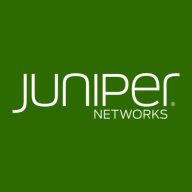

Juniper QFabric and Cisco FabricPath compete in the data center networking category, offering scalable and high-performance solutions. Juniper QFabric seems to have the upper hand in pricing and support, while Cisco FabricPath has an edge with its feature-rich offerings that justify its higher price point.
Features: Juniper QFabric is known for its 40 gig backbone InterConneX, spine-leaf topology for single-hop connections, and scalability. It is agile, flexible, and cost-effective, integrating well with tools like Chef and Puppet. Cisco FabricPath offers reliable network performance, cloud management, and robust security features. It enhances Ethernet performance and is stable and scalable with minimal errors, flexible protocols, and traffic prioritization capabilities.
Room for Improvement: Juniper QFabric could benefit from enhanced feature flexibility and more comprehensive documentation. An expanded support network and more intuitive user interfaces would be advantageous. For Cisco FabricPath, simplifying deployment processes and reducing the need for advanced expertise would be beneficial. Enhanced cost efficiency and an improved primary client service might also add value.
Ease of Deployment and Customer Service: Juniper QFabric offers an intuitive deployment process and excellent customer service, which facilitates quicker adoption and issue resolution. Cisco FabricPath, despite offering extensive documentation and support resources, has a challenging deployment process that often requires additional expertise. However, Cisco's support infrastructure is more robust, providing assistance through complex scenarios.
Pricing and ROI: Juniper QFabric typically has a lower initial setup cost, making it appealing for organizations mindful of budgets and seeking faster ROI. Although Cisco FabricPath entails higher deployment costs, it delivers higher long-term returns due to its advanced features and scalability, optimizing network performance and contributing significantly to ROI. The pricing strategies highlight their focus, with Cisco offering increased operational value over time.
| Product | Market Share (%) |
|---|---|
| Cisco FabricPath | 3.1% |
| Juniper QFabric | 3.0% |
| Other | 93.9% |


| Company Size | Count |
|---|---|
| Small Business | 11 |
| Midsize Enterprise | 6 |
| Large Enterprise | 14 |
| Company Size | Count |
|---|---|
| Small Business | 4 |
| Midsize Enterprise | 1 |
| Large Enterprise | 5 |
We monitor all LAN Switching reviews to prevent fraudulent reviews and keep review quality high. We do not post reviews by company employees or direct competitors. We validate each review for authenticity via cross-reference with LinkedIn, and personal follow-up with the reviewer when necessary.